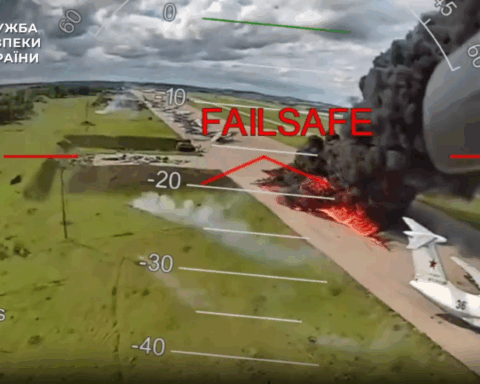An inventor’s eureka moment in a quiet back room has, over the centuries, repeatedly brought dramatic change to the way millions of people live.
The invention of cars, which enabled people to travel further, allowed modern cities to spread out horizontally. And the invention of modern hydraulic lifts let them expand upwards from the 1850s on, into skyscraper office towers and apartment buildings.
These days, 21st-century digital inventiveness is being successfully applied to a range of issues in urban planning that date back to the 20th and even 19th centuries, whether it’s designing buildings in a more effortless and joined-up way or sorting out faults in old heating and water networks.
Overall, infrastructure design has been revolutionised in our lifetime by smart design, says John Seed, EBRD Associate Director for Sustainable Infrastructure Policy & Project Preparation (SI3P), who works on the Bank’s pioneering EBRD Green Cities programme.
“When I left university in 1989 as a civil engineer, the only way to design infrastructure was in pen and ink on a drawing board,” says Mr Seed. “Then in came CAD (computer-assisted design) and revolutionised the way design was done, letting you copy-paste components and speeding up the design and drawing of infrastructure phenomenally.”
“By the end of the 1990s, every consultancy had thrown away its drawing boards and started designing on the computer in three dimensions – so today everything is designed in 3D. Nowadays we talk about building information modelling – BIM – rather than CAD. And that has gone beyond 3D BIM into 6 or 7D BIM, with many more different sorts of information stored in the model, from cost data to scheduling data, and every data stream counting as another dimension.
“Now, if I design you something in 3D BIM, I can give you virtual reality goggles and guns you hold in your hand, and you can go into my model and design where the walls and rooms should be, the lighting – it’s that sophisticated. The 3D BIM enables the client to ‘walk around’ the model, even though it is still a model.”
“The other advantage of this is that if I, as a structural engineer, have just designed walls, floor, staircases, and the mechanical engineer has just put in pipes – then the architect decides to move the staircase – the BIM model will warn of all the clashes. This speeds up the design process, giving you far more.”
Major construction programmes such as new urban rail networks combining multiple individual projects in a shared physical environment now use a “common data environment”. Any subcontractor coming to work in a particular tunnel, whether it’s to install track, lighting or utilities that hang from the wall, needs the BIM model of the tunnel to know exactly where to work, and the common data environment allows subcontractors working across all projects to access information from all the different projects.
The common data environment contains an exact digital twin of the in-reality piece of infrastructure. Any future modifications can then be modelled virtually on the digital twin before making in-reality changes, allowing for speed and efficiency.
This also helps in planned preventative maintenance, Mr Seed says. “If your equipment has embedded sensors it tells you ahead of the game when something is likely to go wrong so you can fix it now – so your service provision is much less disrupted and you’re going to save a lot of money.”
As he points out, having a digital twin brings the ability to optimise performance in new ways. With, say, wind turbines, the digital twin allows operators to model different weather scenarios to optimise how fast the turbine can spin. “The sensors on wind turbines will tell how fast the wind is blowing, the computer knows the condition of the wind turbine and when it was last ramped up. Some can work for limited periods at 120 per cent capacity, but only, say, for an hour a day – but you can get 1-20 per cent more revenue a day in peak conditions because the digital scenario is allowing you to do it, so you can optimise performance.”
In countries such as the UK, US, Canada and Australia, these smart technologies are widely used in planning modern cities. But, Mr Seed says, this is not always the case in EBRD cities, which in many cases are only now catching up after decades of bureaucratic under-investment.
“Our cities know about the advantages of digital tech, but if I turned up at a transport ministry in one of our countries today and gave them a digital twin they might not know what to do with it. We have to educate our clients to work with this.”
“The private sector has had a massive incentive to do things this way because of efficiency savings, revenue and so on. But the initiative hasn’t been there for the public sector. When you’re working for a big government bureaucracy you’re not going to do anything to rock the boat. This is one of the reasons why we are trying to do capacity building with the cities we work with on including smart solutions in their planning.”
The EBRD Green Cities programme was set up four years ago to help cities across the 38 economies where the EBRD works – from Estonia to Egypt and Moldova to Mongolia – modernise and become more sustainable. With most greenhouse gas emissions coming from cities, and cities in the EBRD regions being on average five times more carbon-intensive than the EU average, the programme sees making cities more livable by improving their basic urban infrastructure – water, waste water, district heating and more – as a major opportunity to combat climate change. It is now emphasising smart solutions as the key to achieving this.
As this bigger process gathers momentum, elements of 21st-century technology are already being applied to solve individual planning problems in different parts of the EBRD regions.
One major infrastructure problem in many older cities is leaks. Water and heating systems laid underground will inevitably deteriorate, and in systems laid long before smart design and digital twins it is hard to identify where the leaks are.
One solution successfully applied to maintaining and optimising district energy networks is drone technology. District energy systems are commonplace in the urban centres of the EBRD’s countries of operations, delivering heating, hot water and cooling services through a network of insulated pipes from central generation facilities to homes and businesses. Drones fitted with infrared cameras can be used to identify leaks and heat losses from underground pipe networks, which means lower energy consumption and CO2 emissions.
In 2017, the EBRD supported the construction of a new biomass boiler plant for the district heating (DH) system in Banja Luka, the second largest city in Bosnia and Herzegovina. The project all but eliminated fossil fuels from the network’s heat supply, now over 95 per cent of heating is based on biomass.
The 2017 project addressed generation issues; however the network still suffered from very high heat and hot water losses. A lack of accurate records, little or no metering and an underground network, meant the DH Company has never been able to identify where big losses occur. As a part of pre-feasibility work for a new project, the EBRD commissioned a drone-based thermal survey of the DH network. This mapped the extent of the network and highlighted ruptures, leaks and faulty insulation in order to better plan much needed network investments.
The thermal survey used drones fitted with high-resolution infrared cameras, which flew along the network routing. In the resulting thermal images, ruptures, leaks and faulty insulation appeared as bright spots. Specialists analysed these images, categorised them based on the issues identified and upload them to the cloud.
The district heating company was then provided with an interactive web-based platform with the images and data superimposed over street maps, giving it an overview of the condition of the network and the locations of leaks and losses and making planning repair and renovation much easier.
Satellites have also been used to help a Romanian EBRD client, the utility operator serving the county of Arges, find water leaks.
Water leaks are a particularly intractable problem in many countries. Access to a continuous supply of good quality drinking water is an essential service, but underground water systems were laid down as long ago as the 19th century. While the urban populations such systems serve have multiplied many times since then, the water supply usually remains roughly static. This makes it more and more important not to waste the water treated within a system – yet without adequate maintenance leaks can drain away a significant amount of treated water.
“In our countries of operation, through legacy under-investment in infrastructure renewal, poor workmanship, and normal ground movement the amount of water escaping accidentally from the buried network of clean water pipes is over half to three-quarters the amount put into supply,” explains David Tyler, EBRD Associate Director, Sustainable Infrastructure Policy & Project Preparation (SI3P). He works on water projects within the EBRD Green Cities programme.
So, in July 2020, the EBRD and the Arges regional operating company, APA Canal 2000 SA, whose current estimated losses are around 37 per cent, ran a pilot project using remote satellite technology to find leaks.
Mr Tyler said: “the EBRD selected a technology which filters satellite imagery using specialised software to identify potential points of water loss. This intelligence is even more insightful when overlaid with a utility operator’s configuration of its water network. Satellite imagery has the advantage of covering a vast geographical area in a single snapshot.”
The filtered satellite imagery identified 120 “points of interest”, of which 72 were confirmed as real leaks by the operator’s in-house leakage team. Importantly, 28 of the leaks found were not visible from the ground – representing a significant improvement in the detection rate of an in-house team that, over the same period, would typically find just 8 hidden leaks.
Analysis by EBRD consultants showed that utilising the remote satellite technique could, with three satellite scans per year, almost triple the amount of water saved.
Necessity is the mother of invention, and these are imaginative uses of the latest technology to plug gaps in infrastructure effectiveness. But there are clear lessons to be learned, too, on incorporating more digital solutions, in a more systemic way, into city design.
This is already being addressed in EBRD planning. As of this year, smart solutions are being added into the flagship EBRD Green Cities programme. The programme, whose funding has grown fourfold since 2016 and is due to double again shortly, helps each member city, both with municipal investments and technical support to write a tailor-made programme of planned improvements to improve its future, called a Green City Action Plan (GCAP).
Now smart is coming to the fore in that planning. Kyiv, the capital of Ukraine, and Novi Sad, in Serbia, are the first two EBRD Green Cities that are to have smart assessments built into their GCAP from the start. But other cities already in the programme will have smart components retrofitted into their planning.
The hope of city leaders everywhere in the EBRD regions is that, by making intelligent use of the imaginative real-world developments and digital infrastructure solutions available today, they can leapfrog over the structural problems they inherited from the past – so their cities can negotiate the 21st century bang up to date.Share this page:






